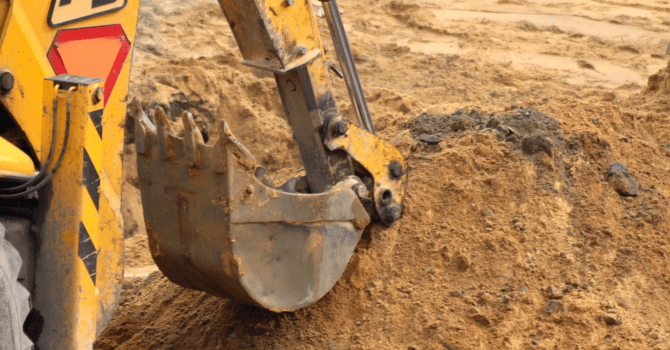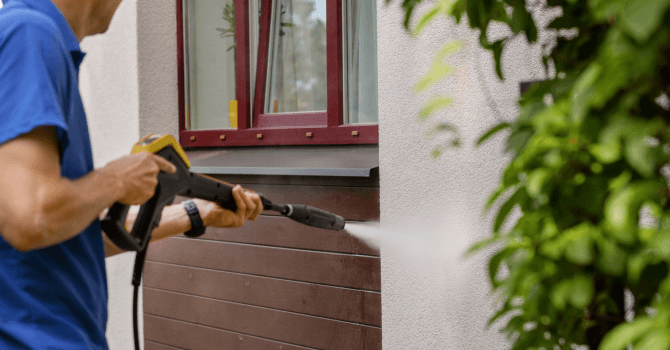Improved Wastewater Treatment Courtesy of a Leaching Bed
By Editorial Team
Updated on November 7, 2023

When it comes to a septic system, the tank is usually the one thing that comes to mind. Yet, the leaching field, which is out of sight, out of mind… is nonetheless a vital component of this installation. Its proper functioning is primordial, with regard to you and your family and the surrounding community and environment.
A leaching bed, or drainage field, is where bacteria and microorganisms found in your septic system will systematically break down waste matter. Should it fail, the entire wastewater treatment system will be affected.
We’ll explain the functioning of a leaching bed, as well as what your role is in ensuring its proper working order.
The Functionality of a Septic Drain Field

Source: Canva
On average, Canadians use 329 litres of water a day. Yet residents of the province of Quebec use, on average, 400. There’s no need for great mathematical solving to understand that, if a household has several occupants, the septic system will have to treat a significant amount of wastewater daily.
Wastewater will ideally be channelled due to gravity between the septic tank and the pipes. When necessary, it will be directed toward the leaching bed with the use of a pump. Since bacteria require oxygen to treat wastewater, the leaching bed is built in non-water-saturated soil (surface water or phreatic zone), and free of all porous elements (asphalt, concrete, shed, etc.).
Wastewater Treatment
A leaching bed is an underground network that treats and redirects septic tank wastewater. Wastewater, which is partially treated by the septic tank, is channelled to perforated pipes that are part of the leaching bed with the help of a pump or gravity. The wastewater will then percolate through a bed of gravel, which is a process that’s designed to eliminate pollutants before the water is released into the ground.
Decomposition of Contaminants
During this last step of the treatment process, microorganisms found in the soil digest and eliminate residual filth (suspended solids, organic chemical products, viruses, bacteria). Their role consists of breaking down the contaminants found so that the wastewater seeping into the soil, mixing with groundwater, is rendered clean. The whole process prevents contaminating the phreatic zone.
What’s the standard size of a leaching bed?

Source: Canva
The size of a leaching bed depends on both the choice of equipment and the property’s requirements (number of persons in the household or number of bedrooms).
For big installations, 10-cm wide pipes (4 inches) can be 30 metres long (100 feet), each positioned within 4 inches of each other. The pipes are typically sitting 90 to 120 cm deep (36 to 48 inches), and are laid on a 30-cm thick bed of gravel (12 inches), protected by a layer of backfill.
Therefore, a standard leaching bed will require 1,938 square feet of grass-covered land to suit a 3-bedroom residence. While this may seem rather big, and such an amount of space isn’t always readily available, there are options tailored for smaller pieces of land. A modified leaching bed is one of the most commonly employed solutions. Not only is it cheaper, but it’ll make do with 646 square feet of space.
Difference Between a Conventional and Modified Leaching Bed

Source: Canva
As you’ve probably gathered, a leaching bed solely relies on bacteria and microorganisms found in the septic tank, as well as the soil’s filtration capabilities, to treat wastewater.
While bacterial colonies are often subjected to unfavourable conditions caused by chemical products and detergents discharged into the system, the soil’s filtration abilities depend on several factors: soil composition, slope, surface area, depth of phreatic zone, permeability, etc.
As such, the water, which is more or less treated, is eventually channelled into groundwater and water streams.
Conventional Leaching Bed
The design, layout, and size of a leaching bed are contingent on the amount of wastewater to be treated (number of bedrooms in a household), the soil’s capacity to absorb water, and the depth of the phreatic zone.
PROS
20- to 35-year service life (35 years in low-sloped, porous soil, and regularly maintained);
Roughly $6,000; it’s the cheapest system;
No energy use;
Aesthetic, solely requires a slight slope;
No annual maintenance fees.
CONS
High risk of clogging;
Risk of poor wastewater drainage;
Higher risk of soil pollution given the size of the field;
The specific land area shouldn’t have a slope exceeding 10 to 30% (based on the chosen treatment system).
Modified Leaching Bed
Especially sought-after between 1980 and 1990, a septic system with a modified leaching bed is still the most commonly used conventional installation to date. It’s definitely preferred, not only for reasons related to cost and simplified functioning but also because it’s suited to smaller pieces of land.
While a conventional leaching bed requires an empty 1,938 square feet of grass-covered land for a 3-bedroom household, the modified leaching bed will provide the same advantages while solely requiring a 646-square-foot plot.
Not unlike a conventional septic system, a modified leaching bed also consists of side-by-side absorption trenches and an absorption bed designed to filter pre-treated wastewater. This more compact system has a secondary treatment system—a modified filter—on top of a primary system.
PROS
More compact than a standard leaching bed;
Worthwhile price;
No maintenance fees, except to empty the septic tank;
Simplified functioning.
CONS
Has an effective service life of about 15 years, but can see 25 years;
The entire absorption surface area has to be excavated and then filled with crushed stone, which means much more significant earthworks.
The surface area in question must have a slope of 10% or less.
The rock, groundwater, or porous or not soil layer must be at least 1.2 m (48 inches) below ground.
Absorption Wells
Absorption wells are the recommended solution when the land’s surface area can’t accommodate a leaching bed. Absorption wells, or infiltration wells, don’t require drains or trenches, they can be installed in confined spaces, meaning land with a limited surface area (323 square feet for three bedrooms). The filtration process is done via the wells’ walls.
PRO
Suitable for small surface area plots (323 square feet for three bedrooms).
CONS
The ground in question must be twice as porous as what’s needed for the other wastewater treatment systems;
Solely three-bedroom or less households can benefit from this option.
Regulation

Source: Canva
Wastewater overflows are hazardous to both human beings and the environment. For that reason, laws have been introduced to ensure that the installations aren’t only adequately built (solely authorized contractors can proceed with a septic system installation) but also properly maintained.
As such, septic systems will be deemed viable as long as there’s no evidence of direct environmental pollution or health hazards, as stipulated in Section 20 of the Environment Quality Act:
No one may emit, deposit, issue or discharge or allow the emission, deposit, issuance or discharge into the environment of a contaminant in a greater quantity or concentration than that provided for by regulation of the Government.
The same prohibition applies to the emission, deposit, issuance or discharge of any contaminant the presence of which in the environment is prohibited by regulation of the Government or is likely to affect the life, health, safety, welfare or comfort of human beings, or to cause damage to or otherwise impair the quality of the soil, vegetation, wildlife or property.
Therefore, if a septic system is deemed ineffective, the government may force the homeowner to replace it. Lastly, note that it’s illegal to alter your septic system yourself, or replace it yourself.
How much does a septic system cost?
Installing a septic system (septic tank, leaching bed, and artisan well) costs between $15,000 and $45,000. To that amount, one can add soil percolation test fees.
The overall cost is influenced by several factors, which explains the considerable discrepancies:
number of residents in a home;
the chosen system, the complexity of installation;
the chosen contractor;
region where the system will be installed, etc.
Maintenance and Compliance
When it comes to a septic tank or leaching bed maintenance (emptying the tank), one must budget between $150 and $250. For an inspection meant to confirm the system’s overall compliance, one will spend between $300 and $500.
Get 3 quotes for your septic system installation
RenoQuotes.com can help you get quotes from a general contractor. By submitting your project, we’ll put you in contact with top-rated contractors. Fill in the form on the homepage (it only takes a few minutes) and get estimates from trusted professionals.
Dial 1-844 828-1588 to speak with one of our customer service representatives.
Looking for something else?
Related articles
The latest industry news, interviews, technologies, and resources.

Cynthia Pigeon
•07 Nov 2023
Did you know that windows and glass doors are majorly responsible for heat loss in homes? Therefore, energy efficiency is a determining factor when it comes to changing your windows to maximize energy savings.

Editorial Team
•16 May 2024
Digging a hole isn’t as easy as it might seem. Hence the reason for excavation standards, which must be adhered to. Abiding by such standards can literally save your life, or that of labourers working alongside you.

Editorial Team
•07 Aug 2025
Bringing to fruition an entrepreneurial endeavour doesn’t solely contribute to the province’s employment rate, it's an accomplishment that rewarding on both professional and personal levels. This is all the more true if you’re operating in the construction industry, an all-important sector in Quebec’s economy, encompassing numerous professionals and trade groups.

Léa Plourde-Archer
•15 Nov 2024
With the arrival of warmer weather, spring cleaning is in full swing. While many start indoors, the exterior of your home deserves attention as well. How do you ensure your home's exterior siding looks its best for the summer? What are the best techniques for cleaning different types of siding materials? Whether you're tackling aluminum, vinyl, wood, or brick, each material requires a specific cleaning approach. From using pressure washers to scrubbing with soft brushes and applying the right cleaning agents, this guide will answer all your questions about how to effectively clean and maintain your home’s exterior siding.

Editorial Team
•20 Sep 2024
Whether it be PVC, wood, or aluminum window frames, glazing beads are key pieces of hardware, indispensable for holding the glass in place and effectively sealing windows. Here’s everything you should know about this strip of material.